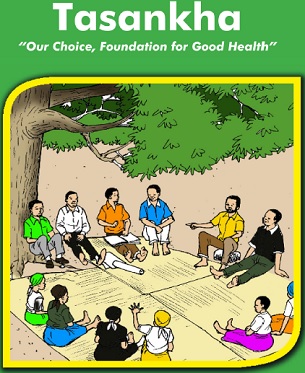Tasankha! Facilitator's Guide
Image

SummaryText
This discussion guide for facilitators is designed to promote community dialogue around health and wellness issues in Malawi. In particular, it seeks to create an understanding of specific issues regarding HIV transmission and prevention and the values, beliefs, and practices that prevail in Malawi culture and how the two are related. It is hoped that this discussion will help change behaviors at the personal and family level, as well as lead to collective community action.
The guide was produced as part of the Tasankha! Campaign, which promotes family values and positive behavioural choices in addressing multiple concurrent partnerships as a key driver of new HIV infections in Malawi (see Related Summary below for more information). It contains a set of participatory learning activities written in a modular format. There are ten themes in total, each consisting of a variety of activities. The interactive methodologies used can help community members adapt their behaviour so that they stay healthy and enjoy a happy and healthy life.
The ten themes are as follows:
The guide was produced as part of the Tasankha! Campaign, which promotes family values and positive behavioural choices in addressing multiple concurrent partnerships as a key driver of new HIV infections in Malawi (see Related Summary below for more information). It contains a set of participatory learning activities written in a modular format. There are ten themes in total, each consisting of a variety of activities. The interactive methodologies used can help community members adapt their behaviour so that they stay healthy and enjoy a happy and healthy life.
The ten themes are as follows:
- Theme 1: Couple communication and improving sexual satisfaction - why and how to communicate with each other
- Theme 2: Concurrent sexual partnerships - what is a sexual network? What does it mean to me?
- Theme 3: Prevention with positives - why and how to communicate with each other
- Theme 4: Prevention of mother to child transmission - what is PMTCT? And why should men be involved?
- Theme 5: HTC and couple counselling - what is it? how does it work?
- Theme 6: HIV discordant couples - what is discordancy and how does it happen?
- Theme 7: Gender norms - what is it and how can we avoid discrimination?
- Theme 8: Male circumcision - what is it? how does the procedure work?
- Theme 9: ART support and treatment - how to stay on treatment? How to get support?
- Theme 10: Post exposure prophylaxis - when to take it? How does it work?
Languages
English
Number of Pages
209
Source
The Health Compass website on November 13 2013.
- Log in to post comments
